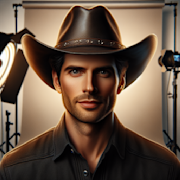Beyond the Spotlight: Unsung Heroes of Classic Movie Production

When we think of classic movies, we often think of the glamorous actors and actresses who stole the show on screen. However, behind the scenes, there are countless individuals who work tirelessly to bring these cinematic masterpieces to life. In this blog post, we will shine a spotlight on some of the unsung heroes of classic movie production who deserve recognition for their vital contributions.
Production Designers
One of the most crucial elements of any movie is its production design. Production designers are responsible for creating the visual look and feel of a film, from sets and costumes to props and lighting. Without their creative vision and attention to detail, classic movies would not have the same immersive and distinctive aesthetic that sets them apart from others.
Take, for example, the iconic sets of “Gone With The Wind” or the elaborate costumes of “The Wizard of Oz.” These elements have become synonymous with the films themselves and have played a significant role in shaping the way we remember these classics. Production designers truly are the unsung heroes of classic movie production, bringing the director’s vision to life and enriching the viewing experience for audiences.
Sound Engineers
Sound is another essential component of movie production that often goes unnoticed. Sound engineers work tirelessly behind the scenes to capture, edit, and mix the audio for a film, ensuring that every word of dialogue, background noise, and musical score is crisp and clear. Their work may not be as visible as that of actors or directors, but it is just as important in creating a captivating and immersive cinematic experience.
Consider the haunting score of “Psycho” or the iconic sound effects of “Star Wars.” These films would not have achieved the same level of emotional impact without the meticulous work of sound engineers. From Foley artists to sound mixers, these unsung heroes play a crucial role in bringing classic movies to life and enhancing the overall storytelling.
Film Editors
Film editing is often referred to as the “invisible art” of movie production, as it involves piecing together raw footage to create a cohesive and engaging narrative. Film editors work tirelessly to cut, trim, and rearrange scenes, ensuring that the pacing, rhythm, and tone of a film are just right. Their meticulous attention to detail can make or break a movie, shaping the way audiences perceive and interpret the story on screen.
Think of the seamless transitions in “The Godfather” or the rapid cuts in “Pulp Fiction.” These editing techniques have become hallmarks of classic cinema, thanks to the skilled hands of film editors. Their work may go unnoticed by viewers, but it is essential in shaping the final product and elevating the storytelling to new heights.
Special Effects Artists
In the world of classic movies, special effects artists are the unsung heroes responsible for creating fantastical worlds, larger-than-life creatures, and jaw-dropping stunts that captivate audiences. From practical effects like miniatures and animatronics to digital effects like CGI and green screens, these artists use their creativity and technical skills to bring the impossible to life on screen.
Consider the groundbreaking effects in “2001: A Space Odyssey” or the iconic creature designs in “Jurassic Park.” These films pushed the boundaries of what was possible in cinema at the time, thanks to the innovative work of special effects artists. Their contributions add a layer of visual spectacle to classic movies that captivate and inspire audiences, showcasing the magic of filmmaking in all its glory.
Conclusion
While actors and directors may take center stage in classic movies, it is essential to acknowledge the unsung heroes behind the scenes who work tirelessly to bring these cinematic masterpieces to life. Production designers, sound engineers, film editors, and special effects artists all play crucial roles in shaping the visual and auditory elements of a film, enriching the storytelling and enhancing the viewing experience for audiences.
Next time you watch a classic movie, take a moment to appreciate the dedication and creativity of these unsung heroes who work tirelessly behind the scenes to make cinematic magic happen. Their contributions may not always be visible, but they are invaluable in creating the timeless classics that continue to captivate and inspire audiences around the world.

Alberto Miller
Movie Fanatic
More From Classics Authority Movies

Movie
The King's Speech (2010)

Movie
Iconic Classic Movie Quotes: Leaving a Lasting Impression

Movie
The Philadelphia Story (1940)

Movie
Amadeus (1984)

Movie
Aliens (1986)

Movie
Iconic Duos: Bogie and Bacall's Timeless On-Screen Chemistry





